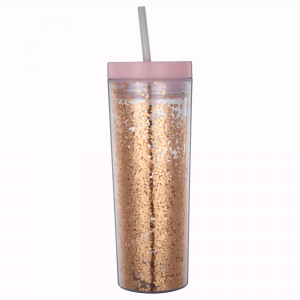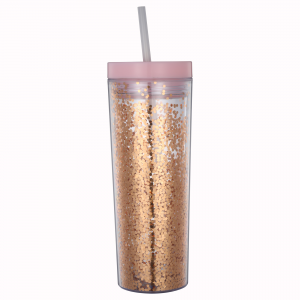The Growing Demand for Eco-Friendly Water Bottles in 2025
Introduction
In 2025, the demand for eco-friendly water bottles is experiencing significant growth. This trend is driven by a combination of factors including increased environmental awareness, government regulations, corporate sustainability initiatives, and consumer health consciousness. As the world becomes more conscious of the environmental impact of single-use plastics, consumers and businesses alike are seeking sustainable alternatives. Eco-friendly water bottles made from materials like stainless steel, glass, and biodegradable plastics are becoming increasingly popular. This blog post will explore the various aspects of this growing demand, including market drivers, regional trends, consumer preferences, and the role of technology and innovation.
Market Drivers
Environmental Awareness
The growing global awareness of environmental sustainability is a key driver for the eco-friendly water bottle market. Consumers are becoming increasingly conscious of the negative impact of single-use plastics on the environment. According to a United Nations Environment Programme (UNEP) report, plastic waste contributes significantly to marine pollution, with an estimated 8 million tons of plastic entering the oceans annually. This awareness is prompting a shift toward reusable alternatives like eco-friendly water bottles made from sustainable materials .
Government Regulations
Stringent government regulations aimed at curbing plastic waste have significantly influenced the market’s growth. Countries around the world are enacting laws that ban or limit the use of single-use plastics. For example, the European Union has implemented directives banning single-use plastic items such as straws, cutlery, and bottles, encouraging consumers and companies to adopt sustainable alternatives. Additionally, the United Kingdom and Canada have initiated plastic-free campaigns that promote the use of reusable water bottles. These regulations are fostering an environment where eco-friendly water bottles are in higher demand .
Corporate Sustainability Initiatives
Businesses are also playing a crucial role in driving the eco-friendly water bottle market through their corporate social responsibility (CSR) efforts. Many companies, particularly in the food and beverage industry, are switching to sustainable packaging solutions to align with consumer preferences for environmentally friendly products. For instance, Starbucks announced its goal to eliminate single-use plastics from its stores by 2025, which includes encouraging the use of reusable water bottles. Such initiatives contribute to raising consumer awareness and encouraging the adoption of reusable alternatives .
Consumer Health Consciousness
Consumers are not only concerned about the environment but also about their personal health. Materials like stainless steel and glass are perceived as safer for health compared to plastic bottles, which can potentially leach harmful chemicals such as Bisphenol A (BPA). For example, Hydro Flask markets its stainless-steel water bottles as both environmentally friendly and safe for human health, resonating with health-conscious consumers who seek products free from harmful chemicals. This dual focus on health and sustainability is driving the adoption of eco-friendly water bottles globally .
Regional Trends
North America
North America holds the largest share of the global eco-friendly water bottle market, accounting for approximately 35% of the total market. This dominance is driven by heightened consumer awareness around environmental sustainability and stringent regulatory frameworks that discourage the use of single-use plastics. The United States leads the region, with growing demand for reusable water bottles among environmentally conscious consumers. Brands such as Hydro Flask and S’well have become popular due to their innovative designs and functionality. The adoption of eco-friendly practices by major corporations, as part of their corporate social responsibility (CSR) initiatives, is further propelling market growth in this region .
Europe
Europe follows closely behind North America, accounting for around 30% of the market share. The region’s strong regulatory stance on reducing plastic waste is a key driver. The European Union’s Single-Use Plastics Directive has been instrumental in reducing plastic consumption and encouraging the use of sustainable alternatives. Countries such as Germany, France, and the United Kingdom are at the forefront of this shift, with a growing number of consumers opting for eco-friendly water bottles made from materials such as stainless steel and glass. Additionally, European companies are increasingly adopting reusable bottles as part of their sustainability strategies, contributing to market growth .
Asia-Pacific
The Asia-Pacific region is expected to witness the fastest growth in the eco-friendly water bottle market, with a projected market share of around 25%. Countries like China, India, and Japan are becoming more aware of environmental issues related to plastic waste, leading to a surge in demand for reusable water bottles. The rise in urbanization and the growing middle class in these countries are key factors driving this trend. Moreover, government initiatives to reduce plastic consumption, particularly in China and India, are expected to further boost the adoption of eco-friendly water bottles in the region .
Latin America and Middle East & Africa
Latin America and the Middle East & Africa together account for approximately 10% of the market. Although smaller in market share, these regions are experiencing gradual growth due to increasing environmental awareness and governmental efforts to curb plastic pollution. In Latin America, countries like Brazil and Mexico are seeing a rise in consumer demand for sustainable products. In the Middle East, nations like UAE and Saudi Arabia are adopting sustainability initiatives, which are expected to drive further market growth for eco-friendly water bottles .
Consumer Preferences and Trends
Sustainable Materials
One of the most significant trends in water bottles leading into 2025 is the shift toward sustainable materials. Consumers are increasingly looking for options that minimize environmental impact. Thus, companies are exploring alternatives to traditional plastics, including bamboo, glass, and stainless steel. Bamboo is a biodegradable and renewable resource that offers a unique aesthetic. Glass is known for its durability and recyclability, making it a popular choice for environmentally conscious consumers. Stainless steel not only provides insulation for temperature retention but is also endlessly recyclable .
Smart Technology Integration
In 2025, smart technology will play an essential role in the evolution of water bottles. With the integration of apps and hydration tracking, smart water bottles will help users monitor their water intake. Some key features expected in smart water bottles include hydration reminders, temperature control, and customizable alerts. These features allow users to stay hydrated based on their activity level and the weather, enhancing the overall user experience .
Built-in Filtration Systems
To address clean drinking water needs, some water bottles will feature built-in filtration systems. These advanced filtration technologies will allow users to refill their bottles from various water sources safely, making them ideal for outdoor adventures, travel, and daily hydration on-the-go .
Stylish Designs and Personalization
As the market for hydration solutions evolves, so do the aesthetics of water bottles. In 2025, consumers will look for stylish designs that reflect their personalities. Trendy colors, innovative shapes, and customizable features will make water bottles not just functional but also a fashion statement. The demand for customized products continues to grow, and water bottles are no exception. Consumers will appreciate the ability to personalize their bottles with names, quotes, or unique designs, allowing individuality to shine through in their everyday essentials .
Conclusion
The growing demand for eco-friendly water bottles in 2025 is a multifaceted trend driven by environmental awareness, government regulations, corporate sustainability initiatives, and consumer health consciousness. Different regions have their unique drivers and growth patterns, with North America and Europe leading the market, while the Asia-Pacific region is expected to witness the fastest growth. Consumer preferences are shifting towards sustainable materials, smart technology integration, built-in filtration systems, and stylish designs with personalization options. As the market continues to evolve, businesses that adapt to these trends and offer innovative, eco-friendly water bottle solutions are likely to gain a competitive edge and contribute to the overall growth of the market.
Post time: Mar-10-2025

